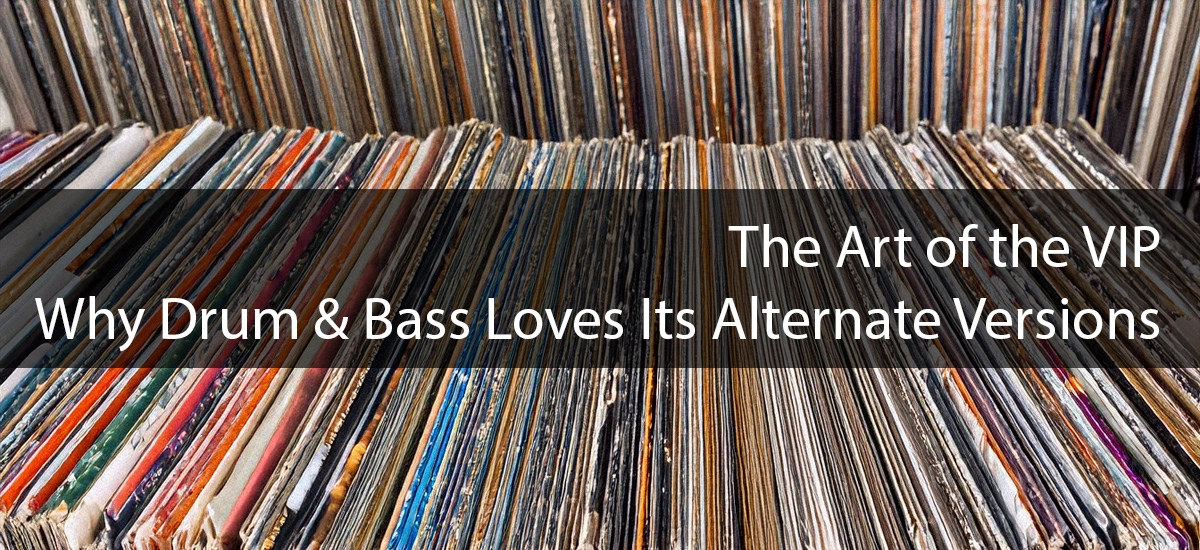
The Art of the VIP: Why Drum & Bass Loves Its Alternate Versions
Introduction
There’s a moment, when the lights are low and the crowd’s locked in, where a tune flips — subtly at first, then with a knowing grin — into something unexpected. That moment, more often than not, is the VIP. It’s a Drum & Bass tradition older than some of the heads on the dancefloor: the art of the alternate version. Re-cut, rebuilt, and road-tested, VIPs have been flipping ravers on their heads since jungle’s earliest days — but why does this scene, more than almost any other, cherish its unofficial upgrades?
In this article, we explore the history, evolution and allure of VIP mixes — from their pirate radio roots to their place in modern DJ sets.
What Is a VIP Mix?
A VIP, or 'Variation In Production' (sometimes cheekily dubbed 'Very Important Person'), is essentially an alternate version of a track — often remixed by the original producer. It might switch up the drop, flip the drums, or introduce a completely new bassline. VIPs are rarely officially released at first. They're weapons, built for sets and held back to create those “what the f*** was that?” moments on the floor.
In D&B, where exclusivity and live energy have always been king, the VIP mix is a badge of honour. For DJs, it’s a way to stand out. For fans, it’s a secret handshake — recognition that they’re witnessing something rare.
A Brief History: From Dubplate to Dancefloor
VIP culture is rooted deep in the dubplate era. Back in the '90s and early 2000s, the most influential jungle and D&B DJs were spinning one-off acetates — fresh dubs from their producer mates or personal alternate versions no one else had. These weren't just tools; they were status symbols.
Take Valley of the Shadows by Origin Unknown. Already a classic, but the VIP version with the “long dark tunnel” intro became the stuff of legend. Or The Nine by Bad Company — remixed by countless fans, but only a few had access to the real VIP floating through sets.
Even today, those traditions continue. Artists like Serum, Skeptical, and Break still craft VIPs as set exclusives — some never see a release.
Why Are VIPs So Popular?
There’s something addictive about hearing a track you know — but don’t know like this. It keeps the dancefloor guessing and creates hype in real-time. VIPs play with expectations, especially in a genre so obsessed with drops, switches and tension.
They're also deeply personal. Producers often tailor VIPs for specific DJs or events, tweaking them for system response or crowd vibe. They’re not just edits — they’re reinterpretations.
And let’s be real: in an age of streaming and social media snippets, the VIP restores a bit of mystery. Not everything is available to everyone, and that’s part of the magic.
Modern Takes: VIPs in 2020s Drum & Bass
Today, VIPs are still alive and well — though the digital age has reshaped the landscape. Some producers tease them for months before a Bandcamp drop. Others hold them forever, circulating only through USBs between trusted selectors.
Artists like IMANU, QZB, and Halogenix are redefining the VIP with creative flair — sometimes blurring the line between remix, re-edit, and full-blown reinterpretation. Meanwhile, labels like Critical, 1985 Music, and Hospital still drop VIPs as part of deluxe editions or vinyl exclusives.
The sound has shifted too. Where classic VIPs might just rearrange the drop or intensify the bassline, modern ones often explore entirely new structures, moods, or tempos.
Classic VIP Moments: A Few Honourable Mentions
-
Origin Unknown – Valley of the Shadows (VIP)
-
Sub Focus – X-Ray (VIP)
-
Break – Let It Happen (VIP)
-
DJ Hazard – Bricks Don't Roll (VIP)
-
Culture Shock – Troglodyte (VIP)
These tracks didn’t just remix the original — they redefined how they landed in a rave.
Should You Release a VIP? Advice for Producers
If you’re a producer, VIPs can be a powerful tool. But timing and context matter. Don’t just slap “VIP” on a weaker edit — build something that justifies its own existence. Test it. Sit with it. Ask: does this version do something the original didn’t?
And remember: the mystique around a VIP can sometimes be stronger than the tune itself. Consider giving DJs an exclusive for six months before you drop it on Bandcamp. Let it breathe. Build anticipation.
Final Thoughts: The Legacy Lives On
In a genre that thrives on energy, exclusivity and evolution, the VIP is more than just a mix — it’s a cultural signal. It tells you who’s connected, who’s trusted, and who’s pushing boundaries. It’s a reminder that even in a digital world, some things are best heard live, on a proper system, with a crowd losing their minds.
So next time you're in the dance and something flips unexpectedly, savour it — that, right there, is the art of the VIP.


























Comments
0